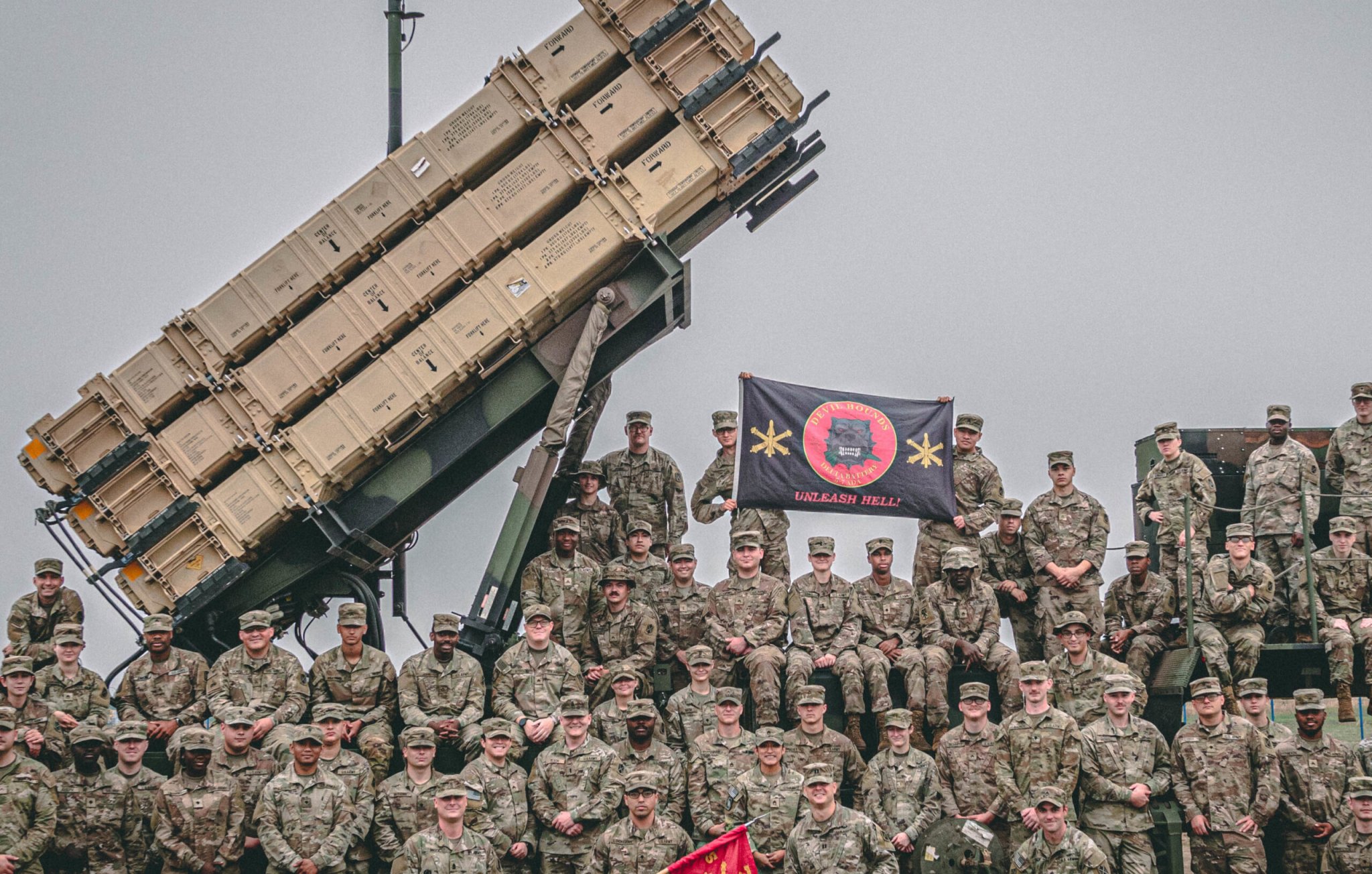

The Army is adding positions for 7,500 soldiers including many in air and missile defense while also cutting thousands of unfilled positions — including many in special operations — to shrink the overall active duty force.
The new positions were described in the “Army Force Structure Transformation” which addresses the service’s restructuring after the two decades in Iraq and Afghanistan. The plan includes building up the Army’s integrated air and missile defense.
The Army said plans to add four more indirect fire protection capability battalions for short to medium-range capabilities; nine counter-small uncrewed aerial system batteries; and four additional Maneuver Short Range Air Defense Battalions for low altitude aerial threats.
Air defense troops have long been among the most deployed in the Army and demands on those fields are only likely to increase as threats in the Middle East continue to grow of drone, rocket and ballistic missile attacks by Iranian-backed militias since mid-October.
But the service also plans to cut more than 20,000 so-called “authorizations,” or billets for individual troops, which includes filled and unfilled soldier positions. The move highlights the military’s departure from counterinsurgency and counterterrorism operations in the wars after 9/11.
Subscribe to Task & Purpose today. Get the latest military news and culture in your inbox daily.
Now the service is reorienting itself to conduct “large scale combat operations against technologically advanced military powers” like Russia and China.
The changes will take place between fiscal years 2025 and 2029.
Where the cuts are coming from
The Army’s force restructure plan includes bringing down “authorized” troop levels to around 470,000 soldiers by fiscal year 2029. The Army’s current total force is around 445,000 which is less than its allowance of 494,000 soldiers due to the service’s recruiting and retention crisis brought on by the economy, quality of life issues and image-related problems on sexual assault and suicide rates.
“The Army is not asking current soldiers to leave. As the Army builds back end strength over the next few years, most installations will likely see an increase in the number of soldiers actually stationed there,” according to the document.
The Army also plans to cut around 3,000 authorizations from the Army special operations forces – an issue that gained criticism from lawmakers like Florida Republican Rep. Mike Waltz, a former Green Beret. In October, a U.S. official told Task & Purpose that the cuts were not expected to affect Green Berets who conduct combat missions.
In a statement to Task & Purpose, Waltz called the cuts to special operations forces misguided.
“The Find, Fix, Finish, and Exploit doctrine revolutionized modern warfare. As we see with Iran and its proxy forces in the Middle East, capability is still very much needed,” Waltz said, adding that the cuts include intelligence analysts, civil affairs officers, psychological operations forces, and others “who are key to soft power and shaping the battlefield below the level of conventional war.”
Army special operations forces have “doubled in size” in the last 20 years, according to the plan. Historically, Special Forces have been tasked with training and fighting alongside local forces as part of their “foreign internal defense” mission. Green Berets have embedded with local forces in Vietnam, Afghanistan, Syria, Niger, and elsewhere.
The Army’s analysis found that the existing SOF “meets or exceeds demand in large-scale conflict relative to other capabilities.” The Army said that reductions will retain SOF capabilities while prioritizing cuts in positions and headquarters elements that have been historically vacant or hard to fill.
The rest of the cuts are primarily focused on close combat forces which accounts for around 10,000 authorization reductions, or soldier slots. This includes inactivating cavalry squadrons of U.S.-based Stryker brigade combat teams and infantry brigade combat teams, converting infantry brigade combat team weapons companies into platoons, and eliminating some security force assistance brigade positions.
Officials used modeling and simulations to do targeted cuts of legacy formations that were put together for “soldier-intensive” counter-insurgency operations during the GWOT. As the Army pivots to strategic competition and threats from peer adversaries, the Army is now prioritizing large scale, multi-domain combat operations.
One of the service’s significant additions is its five Multi-Domain Task Forces which are designed to incorporate Army capabilities with other branches and international partners.
“As discussions with allied countries progress over time, the Army will likely forward station elements of the MDTFs permanently, such as the multi domain effects and long range fires battalions, to strengthen deterrence,” the plan said.
These task forces conduct intelligence gathering and synchronization, deliver non-kinetic space and cyber effects, and handle long-range fires.
The task forces include a headquarters and headquarters battalion, a multi domain effects battalion, a long-range fires battalion, an indirect fire protection capability battalion, and a brigade support battalion. Three task forces will be assigned to Army Pacific, one to Army Europe-Africa and another will be service-retained, likely focused on Central Command’s region. One headquarters is in Germany and another is stationed in Hawaii.
UPDATE: 2/28/2024; This article has been updated with a statement from Congressman Mike Waltz on cuts to Army Special Operation Forces.
CORRECTION: 2/29/2024; Under the Army Force Structure Transformation plan, the Army is creating 7,500 new positions, many of which will be dedicated to air defense roles. A previous version of this article indicated that all of the 7,500 new positions would be dedicated to air defense.
The latest on Task & Purpose
- Afghanistan’s ‘Angel of Death’ is retiring from Air Force special ops
- Drill sergeant shoots first perfect score at Army marksman course
- National Guard asked to deploy to suburban Boston high school
- Space Force cancels classified military communications satellite project
- Navy commissions ship named for Medal of Honor recipient
